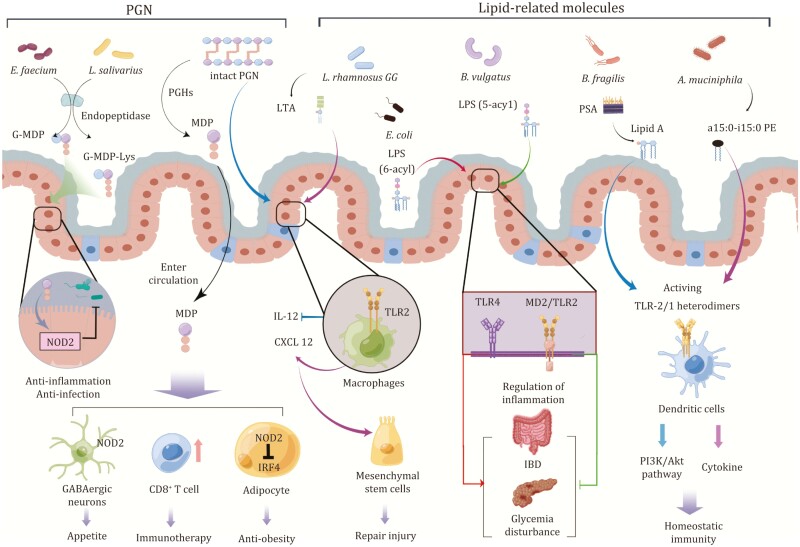Figure 4.
Targets and signaling pathway modulated by gut microbiome-derived immunogenic molecules. The production of G-MDP-Lys and G-MDP by L. salivarius and E. faecium depends on its endopeptidase activity. Both derivatives show anti-inflammatory or anti-infective activity in the intestinal epithelium by triggering NOD2. MDP enters the circulation, contributing to activation of the NOD2 pathway, which regulates appetite via GABAergic neurons; enhances the immunotherapy effect of tumor via CD8+ T cell expansion; reduces weight by inhibiting IRF4. Intact PGN could inhibit IL-12 production by acting on TLR2. For lipid-related molecules, LTA from LGG also stimulates CXCL12 production by binding to TLR2 of macrophages, thereby promoting mesenchymal stem cells to migrate to epithelium for injury repairment. The hexacylated LPS from E. coli is a potent agonist of TLR4, promoting colitis and metabolic disorders, while pentacylated LPS from B. vulgatus have anti-inflammatory activity dependent on MD2/TLR2 and TLR4. For lipids, lipid A from the PSA of B. fragilis triggers PI3K/Akt signaling via a heterodimer of TLR2/1, restoring immune homeostasis. The phospholipid antigen a15:0-i15:0 PE from A. muciniphila binds to the heterodimer of TLR2/1 to regulate the immune response of DCs. Figure 4 is drawn with Figdraw.

